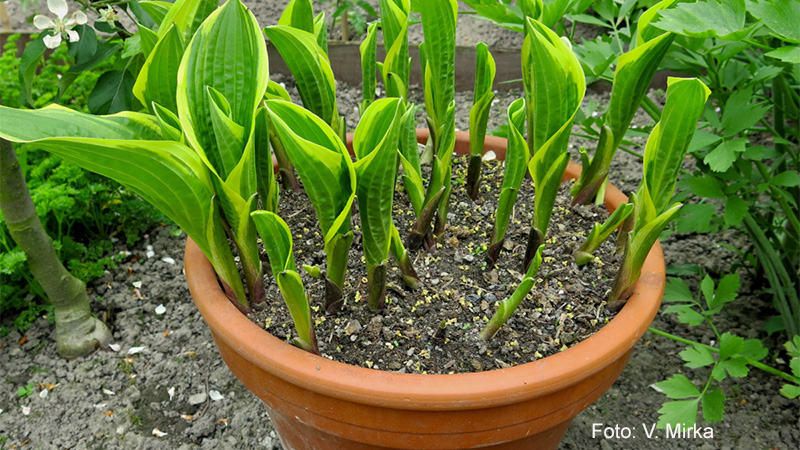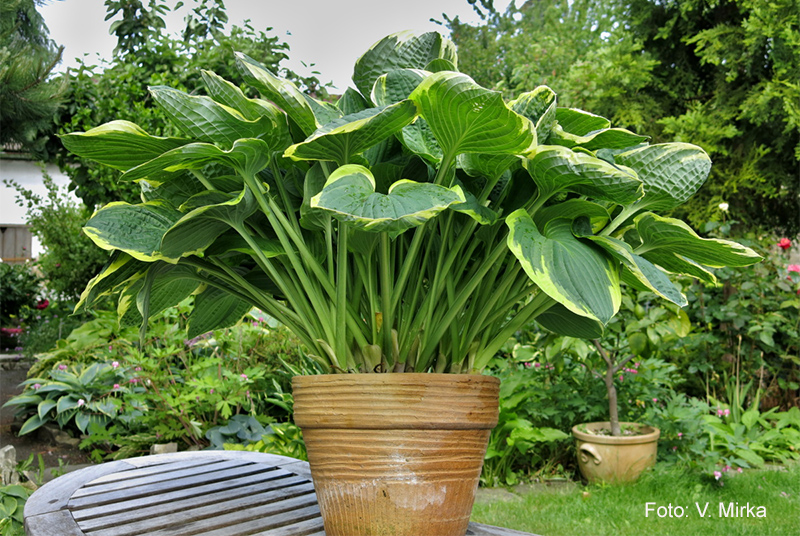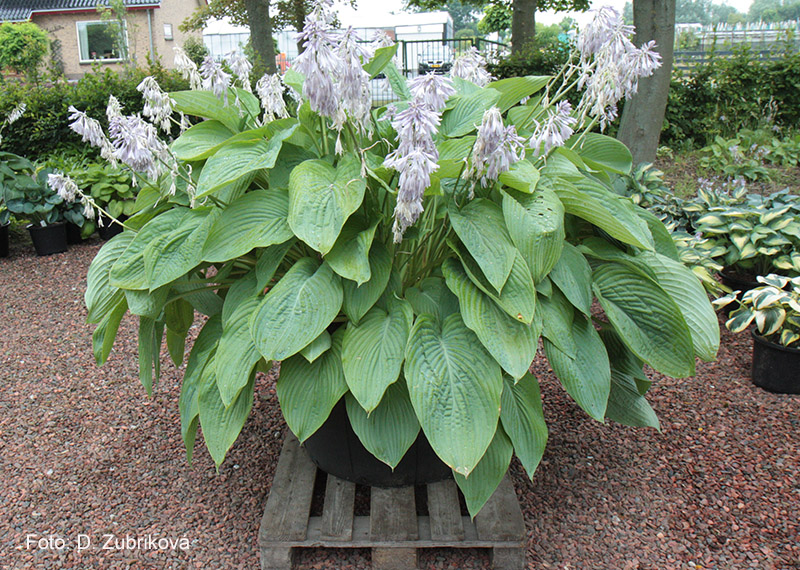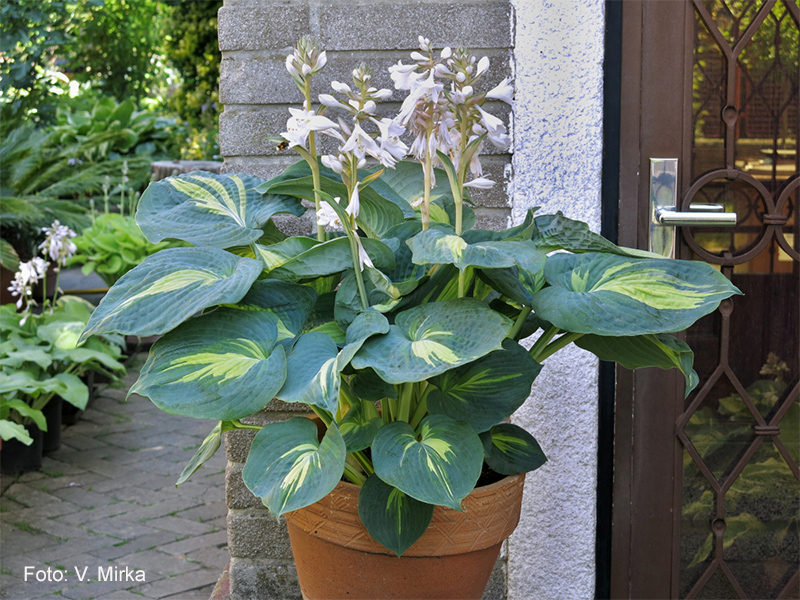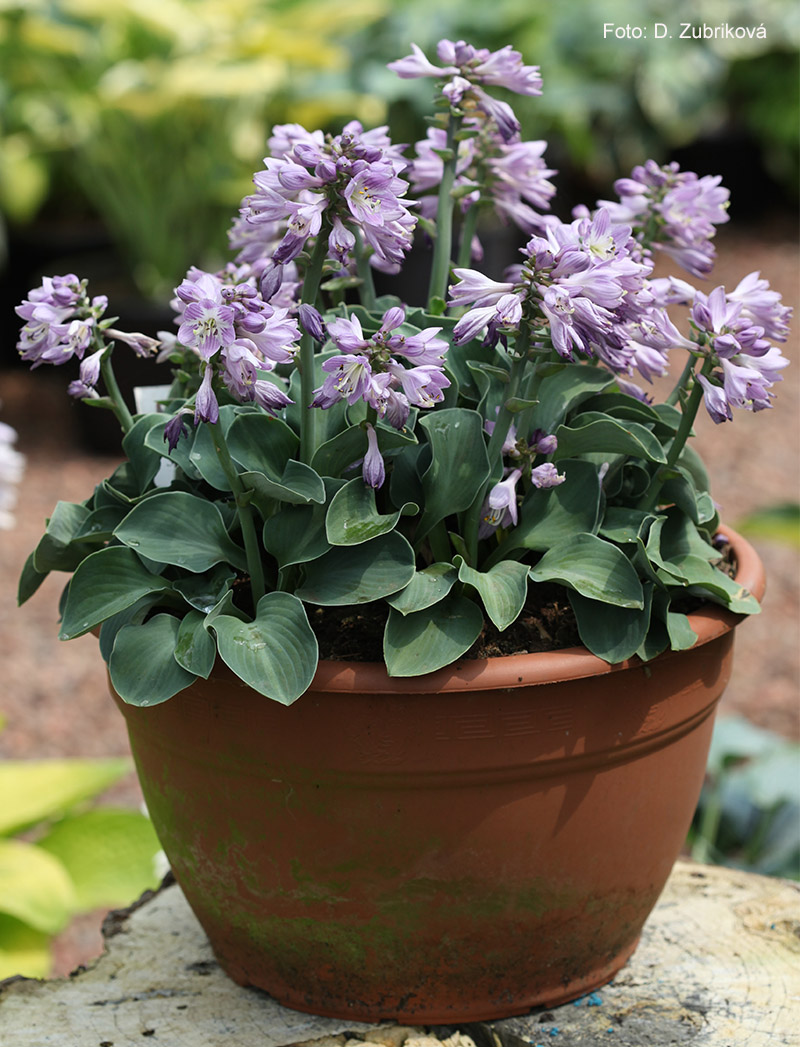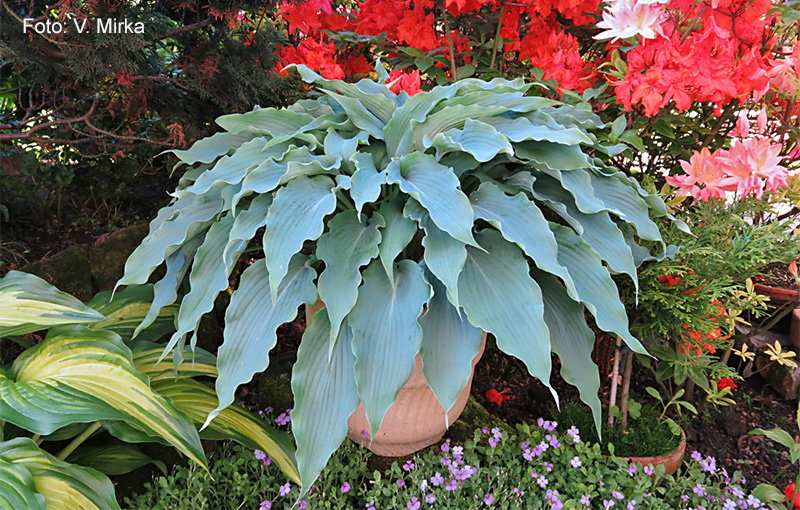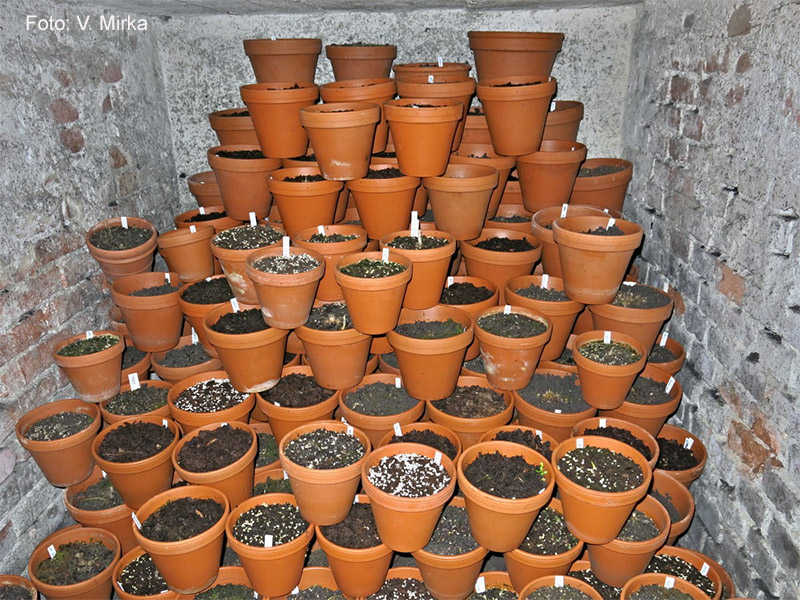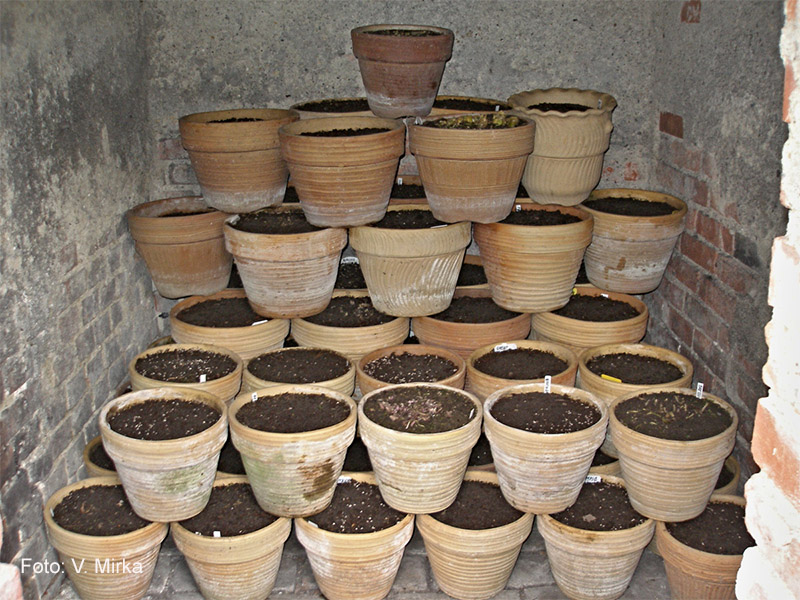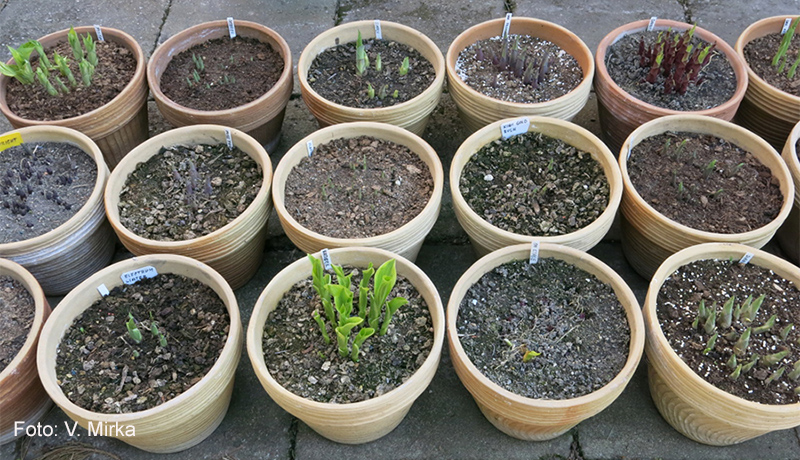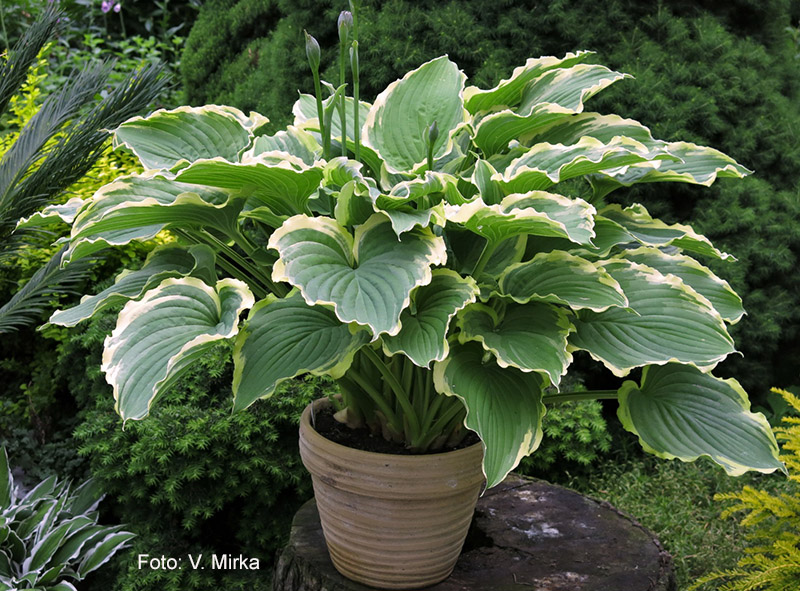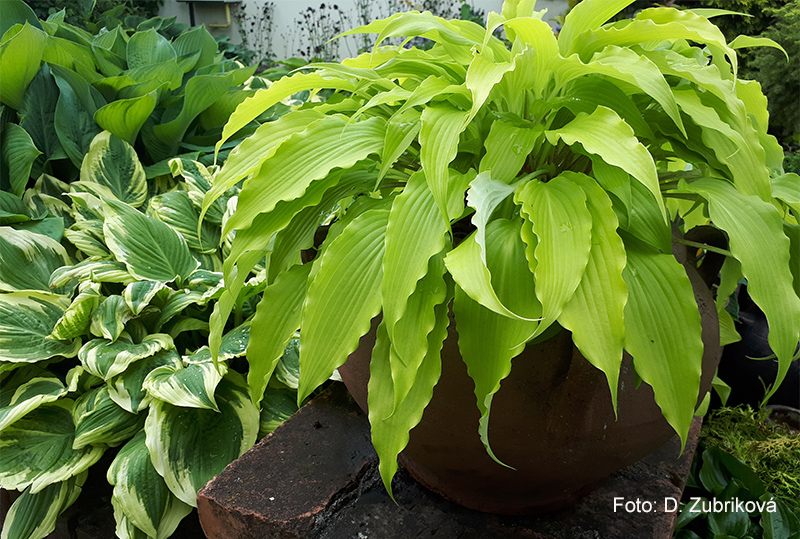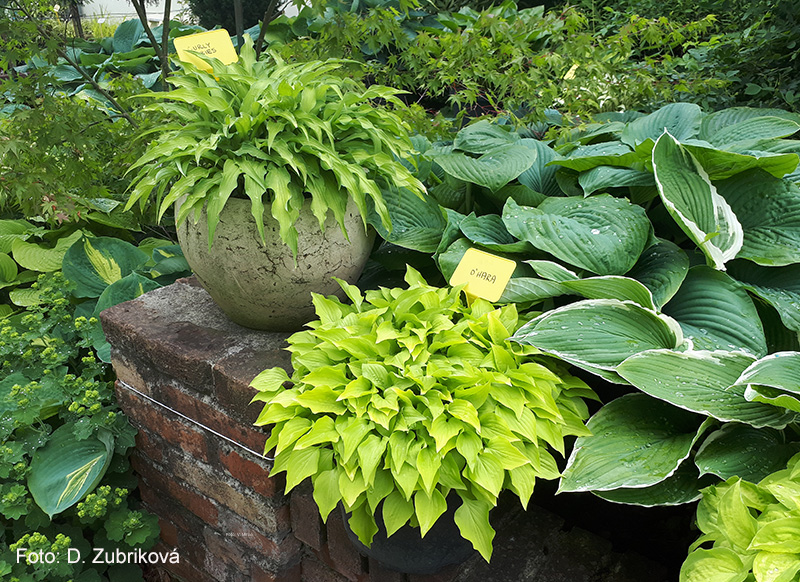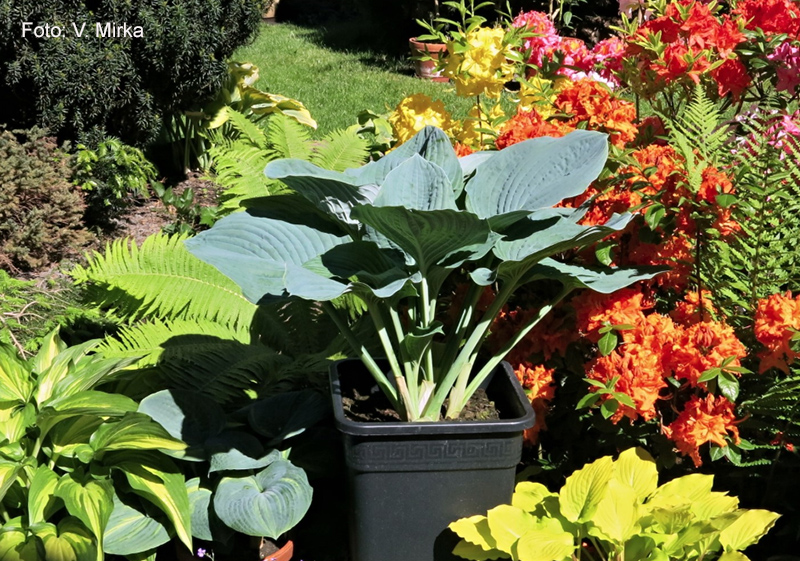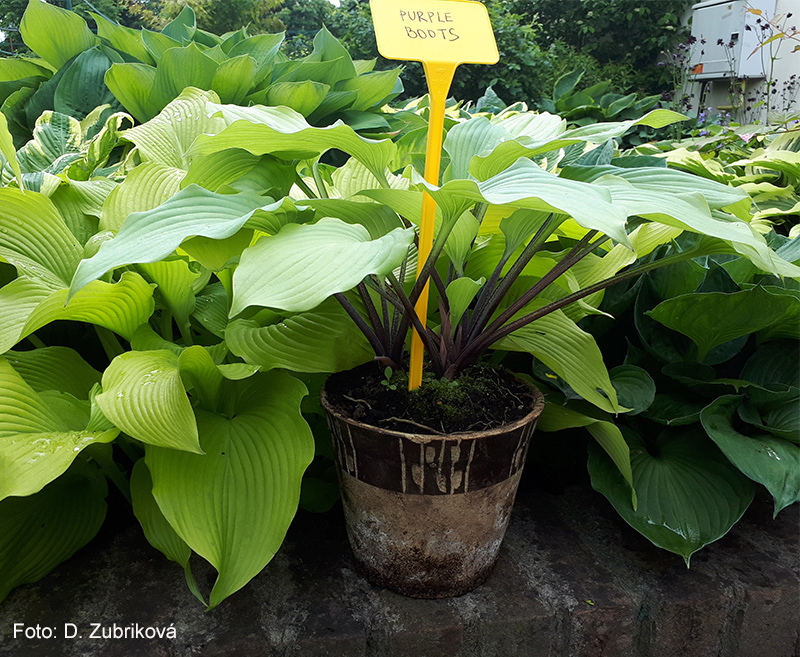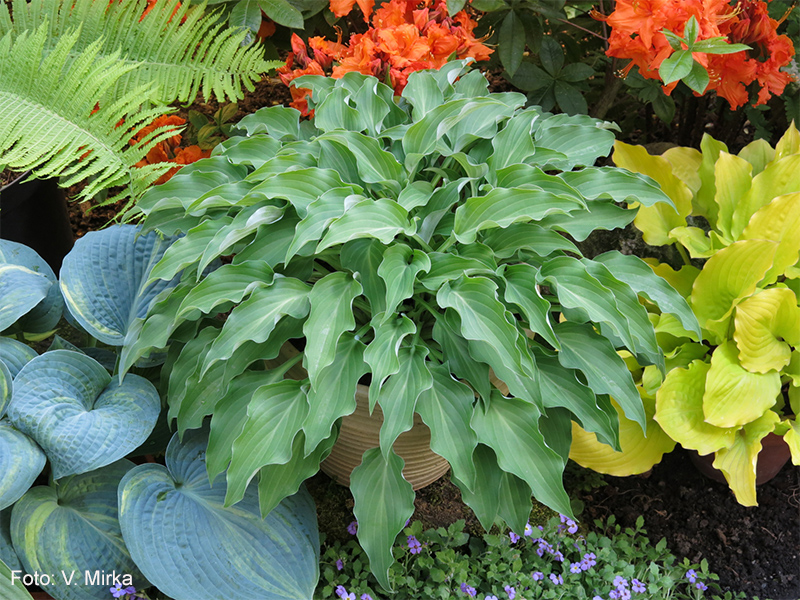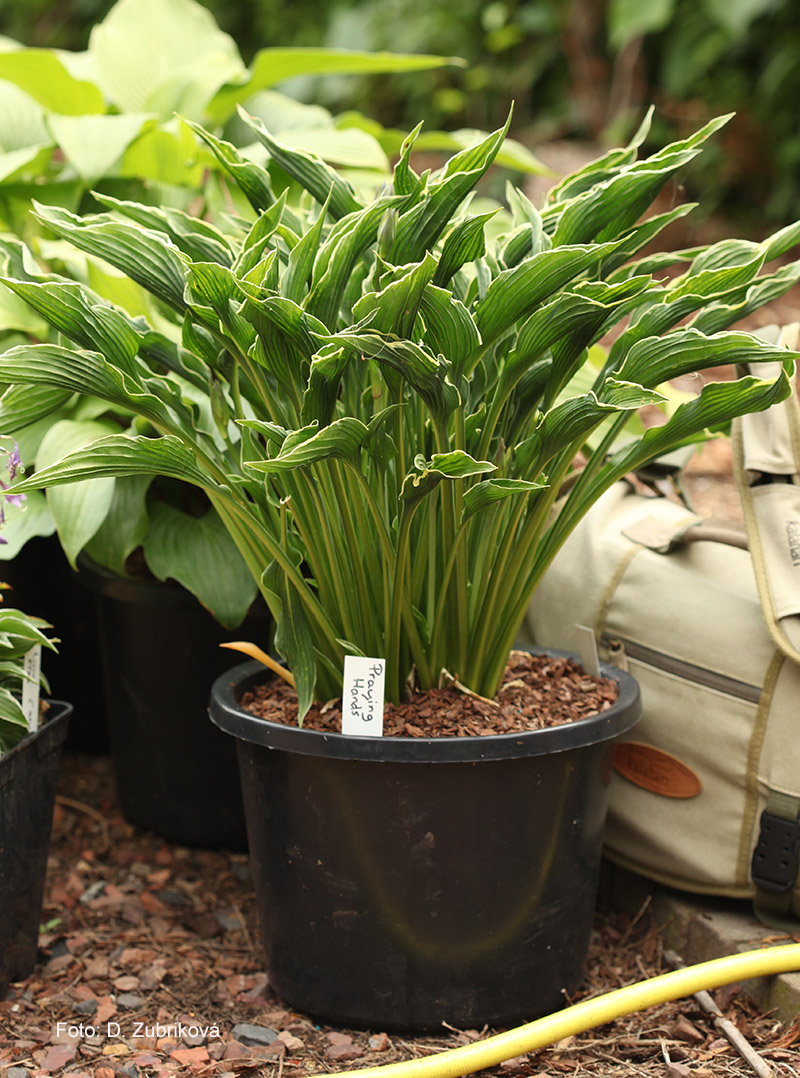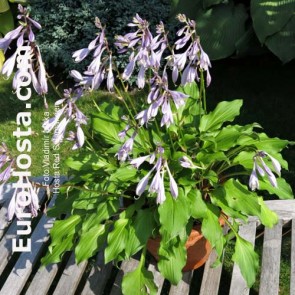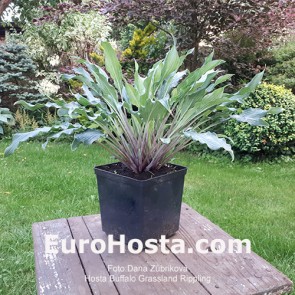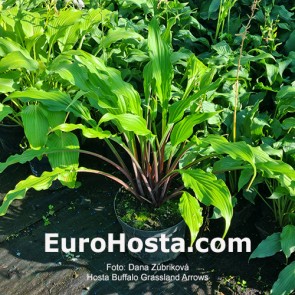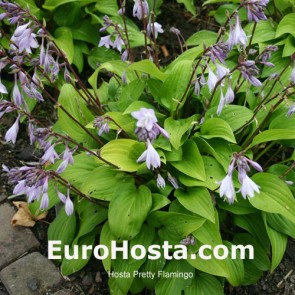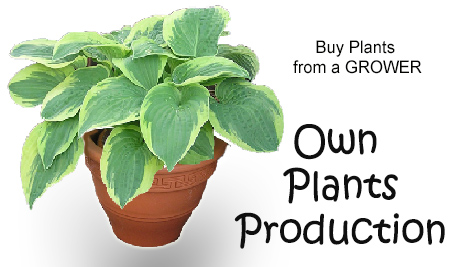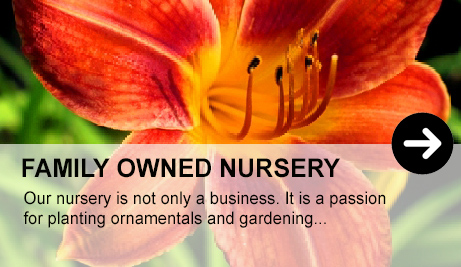Hostas in pots - helpful solution | Text and Foto: Eurohosta, January 2020
BLOG: All Articles - Eurohosta Blog
|
Hosta in pots. That is not a new idea, and we discussed this already in our Newsletter in February 2014. However, still many people are not sure about planting hostas in pots. Recently we got several requests for advice on how to grow hostas in pots. Here we summarize some of our experiences with planting hostas in pots and give you some advice on how to grow hostas in containers. Hostas are among those perennials, which do very well in containers! So do not worry and lets go plant them in pots! Planting plants in pots has a long tradition. In Europe, this way of growing ornamental plants has been known since ancient times, represented mainly by growing geraniums, chrysanthemums or begonias. Our grandmothers have grown the popular oleanders in pots. Later on, succulents have moved into pots and were planted on balconies and terraces. “Angel’s trumpet” – the fragrant and prominent datura plants are also very popular as pot plants. Some people also grow thujas, citruses and other shrubs and ornamental plants in pots. Growing plants in pots is very popular in the southern parts of Europe, with mild winters, where people also plant various cacti, thujas, agapanthus and other tender plants in pots. Also in colder parts of Europe, this way of growing is famous. However, winter frosts make overwintering somewhat tricky. Wintertime creates the need to protect the plants in the winter garden, basements or home atriums. Hostas are very hardy plants, and can survive outside in pots in most of the plant hardiness zones of Europe. They only need a little bit of care... Hostas in pots - helpful solution Hostas are among those perennials that do very well growing in containers! Growing hostas in pots allows you to use your garden space much more effectively. You can change the pot’s location in the garden and so you can easily change the appearance of the garden during the season. Hostas in pots keep their beauty all season long. Especially, hosta in pots are suitable for pergolas, terraces and patios or balconies. Place hostas in decorative containers on the patio, next to the benches or just somewhere in the garden. You can fill an „empty“ garden spot, where other plants have gone dormant or have disappeared. You can situate hostas in pots at ground level or sometimes, in an elevated position. An elevated position is particularly useful when planting miniature hostas, as bonsai plants for example, placing them close to the observer to reveal their tiny features. Hostas are among those perennials that do very well growing in containers! Size of the pot Most hosta experts and experienced hosta gardeners recommend choosing a pot that is smaller - small is better in this case than a big one. When you planting, the hosta plant likes to have about 5-6 cm of space between the roots and the edge of the container, but no more! So, the pot should be a bit tight. A small pot may require more frequent watering, which may be a disadvantage, but on the other side, it is better for the overall health of your hosta. Never pot a hosta with a small root mass in a very large container. You’ll have problems! Adequate pot size is essential for success. Select a pot of an appropriate size for the size of the hosta cultivar. The larger the cultivar the larger the pot. Miniature cultivars can be grown as bonsai in a pot with a capacity of 0.5 to 1 liter. Plant medium-sized cultivars in larger pots of 3-5 liters. You can also grow large and very large hostas in pots. However, such a cultivar needs to be grown in very large pots – sometimes as large as 15-30 liters. Handling such a heavy pot brings some difficulties. Therefore, be careful when planting hostas in very large pots. While you can take advantage of the “mobile green”, moving such a heavy pot can be a challenge... In addition, large pots can make the removal of plants for wintering too complicated. Pot material Choose a pot made from a proper material. Before buying a pot, make sure it is made from a material that is suitable for outdoor growing, as you have to keep hostas outside all-year. Frost, large temperature changes and UV rays can destroy many materials during one or two seasons. Among the most suitable materials for outdoor use are terracotta and ceramics. Be careful however, because not all pots made from terracotta may be suitable for outdoor use. Indeed some are baked at low temperatures, and the material can be porous, and the capillary water can destroy this material under deep frost conditions. Be aware that outdoor pots can be 30 % more expensive than indoor pots. However, it is worth paying the higher price so you can avoid frustration and other problems in the near future. Some gardeners say that plastic pots are not suitable for hosta cultivation – they can be damaged by UV radiation, deep frosts, and can quickly overheat during hot summer days. We do not fully agree with this. They are many times cheaper than terracotta. If you choice the right plastic materials, the pots can be resistant to UV and deep frost. They can be in many cases a good solution. Sometimes they can even last longer than a terracotta pot. We have grown some of our hostas in plastic pots for years. The truth is, that plastic pots can be a bit more sensitive to overheating and may require a bit more watering in the summer.
Hosta Christmas Tree in terracota pot. Hosta Empress Wu in a big plastic pot Soil Buy garden substrate in your local garden shop, and plant hostas in this. Before use, mix the soil substrate with about 1/3-1/4 of garden soil, which usually has more clay parts. Usually light, commercially produced substrates, can in summer dry out very quickly in the pot, and the plants can suffer from lack of moisture. Clay keeps the water bound more tightly, and plants can thrive longer. This is very important for hostas. In any case, do not plant hostas in acidic peat! Fertilization Hostas in pots need regular fertilization. We recommend long-lasting fertilizers applied once a year, in May, and combined with fast-degrading ones applied 4 – 5 times per season. Do not use any fertilizers from September to allow the plants to prepare for dormancy. Watering Your hosta in the pot will need regular watering. Hostas planted in the perennial bed do not require as much watering, because the garden soil rarely gets completely dry. Mainly during warm or especially dry weather, you likely will need to water your hostas in containers every day or two. One nice thing about hostas is that when they are dry they will wilt a bit, but they won’t die right away. If your hostas are wilting, they are probably asking for a drink. Be careful and do not water too often or too much, since this can cause crown and root rot. To prevent this situation, make sure you have good drainage on the bottom of the pot. The water should easily flow out of the bottom of the pot. A very good help is a bottom plate under a flowerpot, and during hot days, it is often even necessary to ensure enough water for the plant all day long. Check the substrate moisture regularly and, during the hot summer days, keep the substrate from getting completely dry. Also in the spring, when plants are growing rapidly, they need more water in order to form leaves and flower in appropriate size and color. Hosta Dream Queen in front of the house entrance. Small, flowering Hosta Blue Mouse Ears in a flowerpot.
Hosta Blue Cascade. What about winter? Appropriate overwintering of hostas in pots is crucial. Different growers have different methods, and these overwintering methods are often discussed in social media, whereby their advantages and disadvantages are compared. Check these discussions and profit from knowledge of other gardeners. Our garden is in zone 6 and we keep most of our hostas in pots outside all winter, without any sheltering. All leaves are removed in November. In the spring, from early April, all pots are covered with special white cloth to protect them from fast temperature fluctuations. These spaces should not protect pots only from frost, but also from rain in early spring. You can store containers on the floor or you can make wooden shelves along the walls of the garage or cellar. All the containers should be watered thoroughly before being moved into the garage or cellar. If the space is humid enough, such as a cellar for example, the pots do not need to be watered during the winter. If you store them in a cold, dry garage, the soil can dry out during winter storage, so add water to it. This is often necessary, if the pot is small. Watering is done only in case the container is not frozen. Never water a containerized hosta with a frozen root ball. Do not water pots too much during the overwintering period, mainly in very early spring. If the water is sitting atop of a frozen pot of soil, and the temperature fluctuates – stays below freezing during the night and is over zero during the day, the plant can start to grow and young buds and leaves can be damaged by the ice forming on the top of the soil. This can cause root rot and even can kill cultivars that are more sensitive. To avoid the possible occurrence of this unfavourable situation, overwinter your containerized hostas in an enclosure and do not water them too much in early spring (March and early April), when temperature fluctuate strongly. After the last frost date (late April - early May), remove the containers from the sheltered areas and place them in the garden. Everybody needs to find their own method of overwintering, because the microclimate in each garden is different, and everybody has different garage or cellar conditions… So try it out and find your own best way.
Hostas in pots overwinter in a dry, dark cellar all winter without any problems.
Bring hostas in pots from the protected area to the garden in late April.
Hosta Spring Fling.
Medium sized beautiful Hosta Frisian Pride in a large ceramic pot.
Hosta Curly Fries on the left and hosta O Harra - yellow in the middle - form a dense clumps.
Blue hosta in a black decorative plastic pot.
Hosta Purple Boots.
Wonderful hosta Bohemia Quill Bill Hosta Praying Hands is happy in a black plastic pot. © This text and photos are protected by intellectual property rights under the Law no. 618/2003 Coll. (the Copyright Act). |
||||

